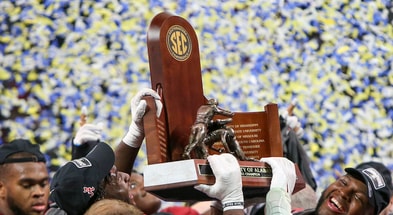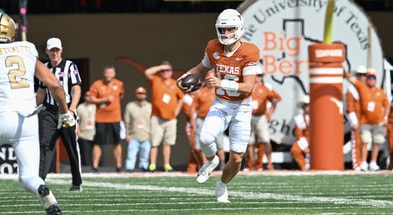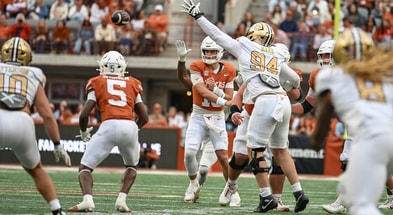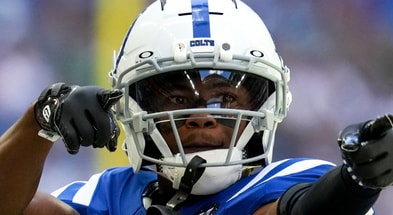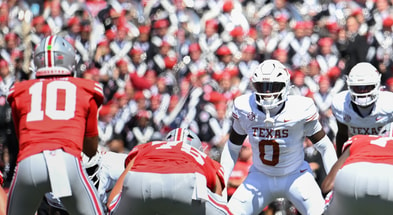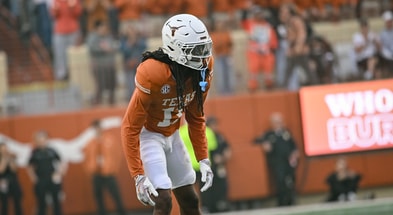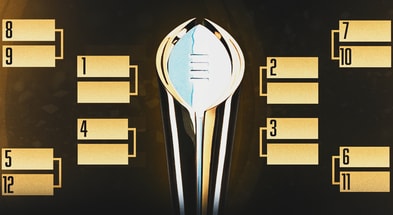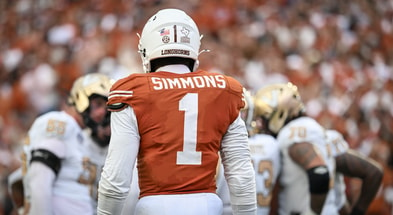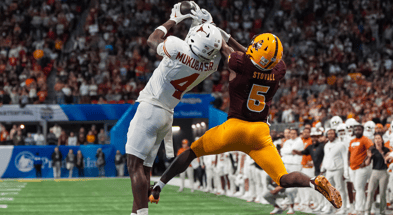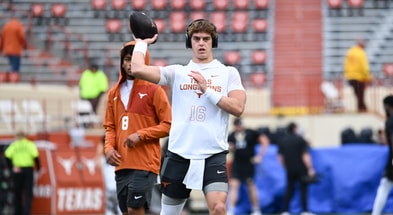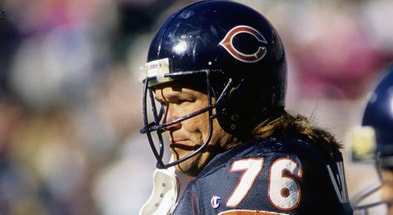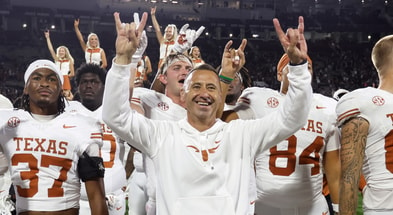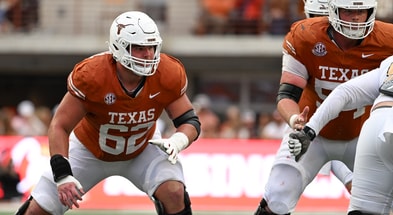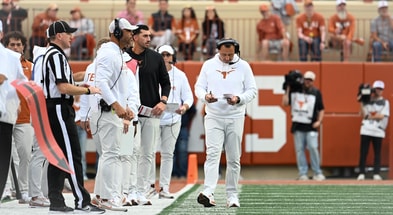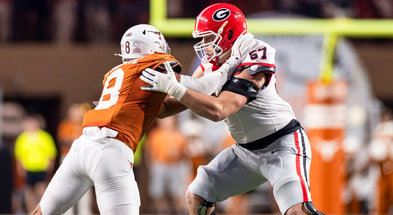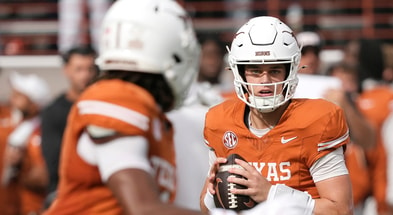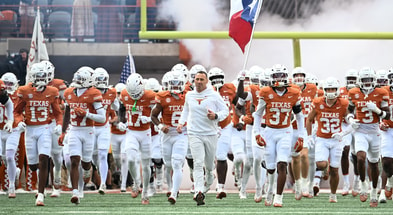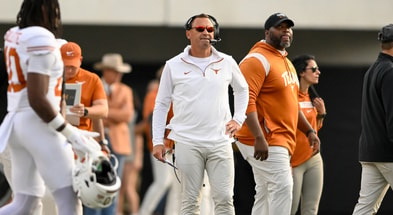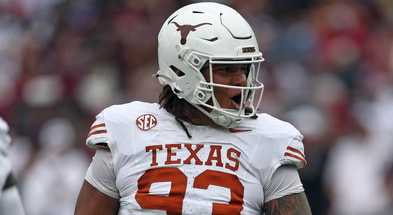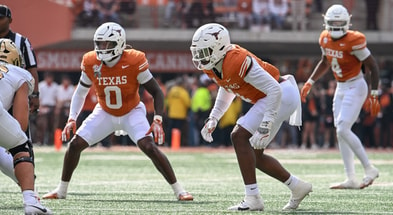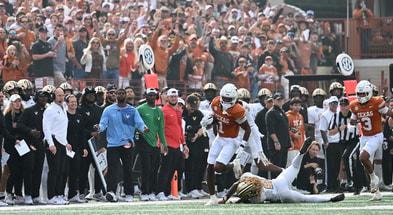Delay of game... on the defense? Get ready for it in 2025
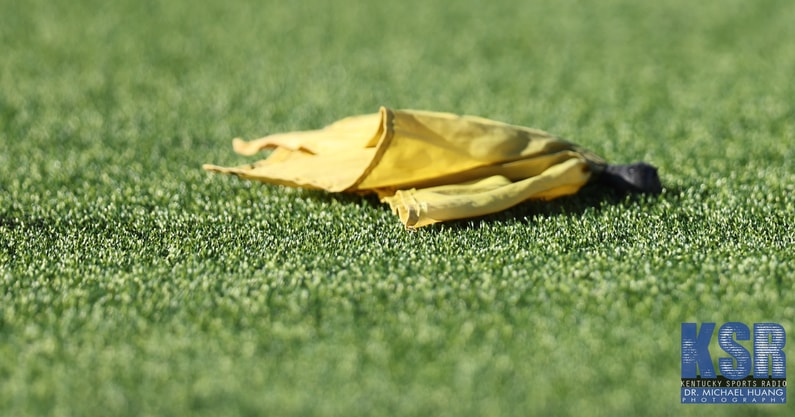
You know the hits when it comes to penalties. “Holding.” “Pass interference.” “Unnecessary roughness.” “Offsides.” You know, the classics.
[Sign up for Inside Texas for $1 and get PLUS access up to the Ohio State game!]
The deeper cuts make you raise your eyebrow a little bit more. “Invalid fair catch signal.” “Sideline warning.” “Running into the kicker.”
One of those deeper cuts is delay of game on the defense. “Disconcerting signals,” meaning defenders were making noises in an attempt to mimic the quarterback’s snap count, is the most common version of this. It’s a five-yard penalty.
There’s another potential way for a defense to commit a delay of game penalty in 2025.
“There is a lot of what I’ll call abrupt coordinated movement by the defense,” SEC coordinator of officials John McDaid said Tuesday at SEC Media Days in Atlanta. “What we’ve seen is over the last four or five years, the number of false starts per game has gone up, and I attribute it to what the defense is doing on that side of the ball. It’s just not what I see in the Southeastern Conference, it’s what my peers and I have all been seeing across the nation.
“This year a change in the football rules is we’re adding a standard to the defensive side of the ball that the offense has had for a century or more. The definition of a false start has forever been action that simulates the snap. That standard, action that simulates the snap, is now put on the defense as well, and the officials are being asked to judge defensive movement in that light.”
A foul results in a five-yard delay of game penalty on the defense.
Visual examples?
First, one of a stem that remains legal. The Georgia defense moves its defensive line, and its defense, in a coordinated fashion. The Dawgs can ostensibly say that their purpose in movement was to change position before the snap into a different alignment. Could it confuse the defense? Absolutely. Could a false start result? Yes. But can a coach say that drawing a false start wasn’t the primary goal of the movement, and the point was to get into a better position? Yes.
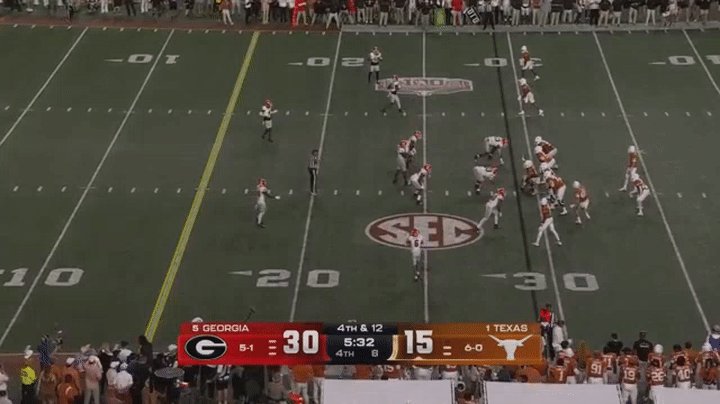
The one in the tweet below from a video in McDaid’s presentation at SEC Media Days?
There’s a foul contained in it.
In the McDaid’s explanation of the new rule, the DT lined up over the right guard commits a foul.
“When I look at their movement, I don’t see them doing anything that simulates the action of the snap,” McDaid told Inside Texas in reference to the left two defensive linemen. “They’re just doing what coaches call stemming. It’s coordinated. It’s fairly quick. But it’s good. It’s the third guy on our right that is just twitching. It’s moving. He’s simulating coming off the ball at the beginning of the snap. That’s the problem that creates delay of game, defense.”
The fact that the “twitching” player did not enter the neutral zone makes no difference.
“Delay of game, defense does not require a player to be in the neutral zone,” McDaid said.
McDaid also said that officials do not discern between two-point stances and three-point stances for the purpose of this movement.
The bottom line is if a defensive player moves in a coordinated fashion with his teammates and does not enter the neutral zone, that’s fine. But…
Top 10
- 1Hot
Auburn Coaching Search
Latest names to know & more
- 2Trending
JuJu Lewis
Colorado to start freshman QB
- 3New
Nick Saban
Has talked to LSU per Shaq
- 4
Playoff Predictions
Debate on No. 1 team
- 5
College Football Playoff
Teams that remain in the hunt
Get the Daily On3 Newsletter in your inbox every morning
By clicking "Subscribe to Newsletter", I agree to On3's Privacy Notice, Terms, and use of my personal information described therein.
“He can’t be doing it for the sake of just creating and simulating action of the snap, a lot of extra movement with his arms, coming forward as he does it, that would be a problem,” McDaid said. “Just changing his width laterally in concert with his teammates that are stemming, that’s not an issue.”
This is a big thing to track for pass-rushers around the country. Timing the snap is part of the game, and McDaid’s explanation made it sound like the purpose of this rule was not to diminish the capabilities of EDGEs to get to the quarterback. And while defensive players were never allowed to enter the neutral zone pre-snap, this rule was made in order to prevent defensive players from making copious movements in order to grab a five-yard flag.
“There’s certainly an element of the game where you’re trying to time the snap count,” McDaid said. “That’s a judgement that’s not necessarily cut and dried that officials need to use. What’s a legitimate football play that he’s simply trying to time the snap count? Or, he gets fooled by the quarterback’s hard count as opposed to he’s trying to do something to get his opponent to false start. One of the big clues is is he doing it in a coordinated fashion with other teammates or is he doing it by himself?”
This isn’t limited to just defensive linemen. Anyone on the defensive side of the ball can be called for delay of game, defense, though McDaid said the focus is on the line of scrimmage.
“What this all boils down to is it’s not in the spirit of the rules to have strategies and techniques to get your opponent to foul before the snap,” McDaid said. “That’s the bottom line. That’s why we’ve had for decades all these rules for quarterback signaling. They can’t have a head bob, things of that nature. Now we’re applying this principle to both sides of the ball because techniques and strategies, now on both sides of the ball, are trying to get your opponent to foul prior to the snap. Because that’s not a compelling game.”
Expect to see a new category of yellow handkerchief this year and more officials with arms folded. But instead of those delay of game penalties being all on the offense, get ready to hear some on the defense.
Other rule changes
- If the player presents as injured after the ball is spotted by the officiating crew for the next play, that player’s team will be charged a timeout.
- If the team does not have any timeouts remaining, a 5-yard delay-of-game penalty will be assessed.
- If a game reaches a third overtime, each team will have one timeout beginning with the third overtime until the game is ended.
- When the decision on instant replay is announced, the referee will only say that the call on the field is “upheld” or “overturned.” The terms “confirmed” and “stands” will not be used.
- No offensive player can be in the direct line of the snap to the potential kicker or within the frame of the snapper on punts for the formation to qualify as a scrimmage kick formation. If a team is not in scrimmage kick formation, they must have five players numbered 50 – 79 on the line of scrimmage. Also, if the snapper is on the end of the line by formation, the snapper will lose scrimmage kick protection, and the opposition can line a player over the snapper.
- If any player on a kickoff-return team makes a “T” signal with his arms during the kick, they give up their right to make a return, and the play will be whistled dead.
- Enhanced rules regarding simulating action at the snap and words or signals that distract opponents when they are preparing to put the ball in play will also be effective next season. No player can call defensive signals that simulate the sound or cadence of the offensive signals. The defensive terms “move” and “stem” would be reserved for players on that side of the ball and could not be used by the offense.
- After the two-minute timeout in either half, if the defense commits a foul with 12 or more players on the field and all the players participate in the play, the officials will administer a 5-yard penalty. The offensive team would have the option to reset the game clock back to the time at the start of the play. If the 12th player is attempting to leave the field and has no influence on the play, the defensive team will be penalized 5 yards with no adjustment to the game clock.
- Coach-to-player communication, similar to technology implemented for the Football Bowl Subdivision last year, will be an optional rule rule for teams that compete in the Football Championship Subdivision.
